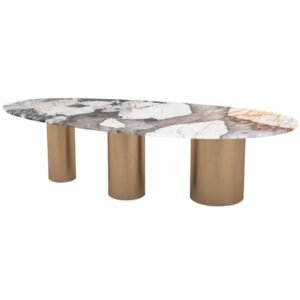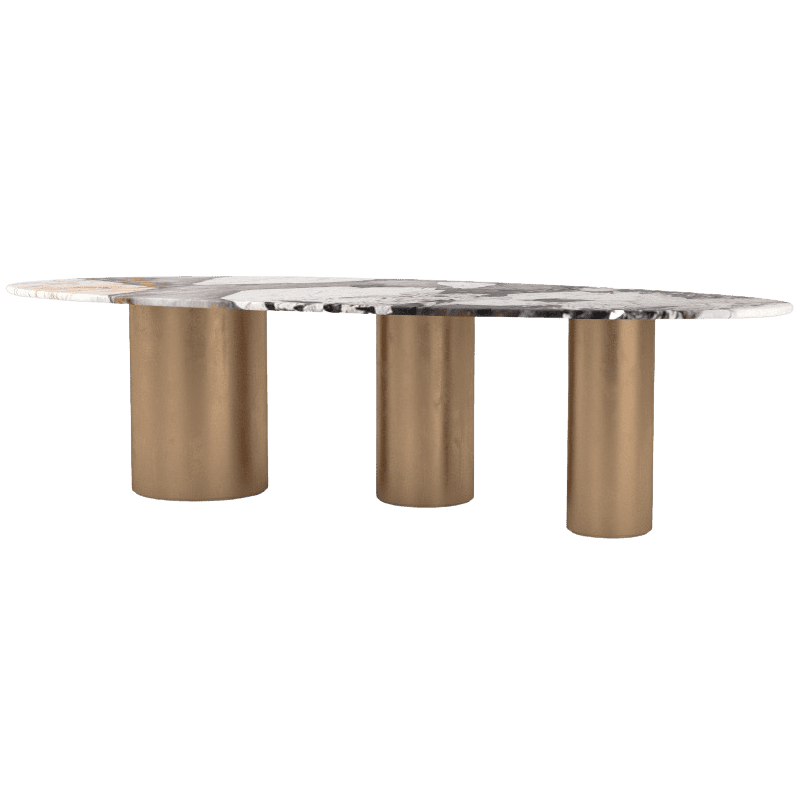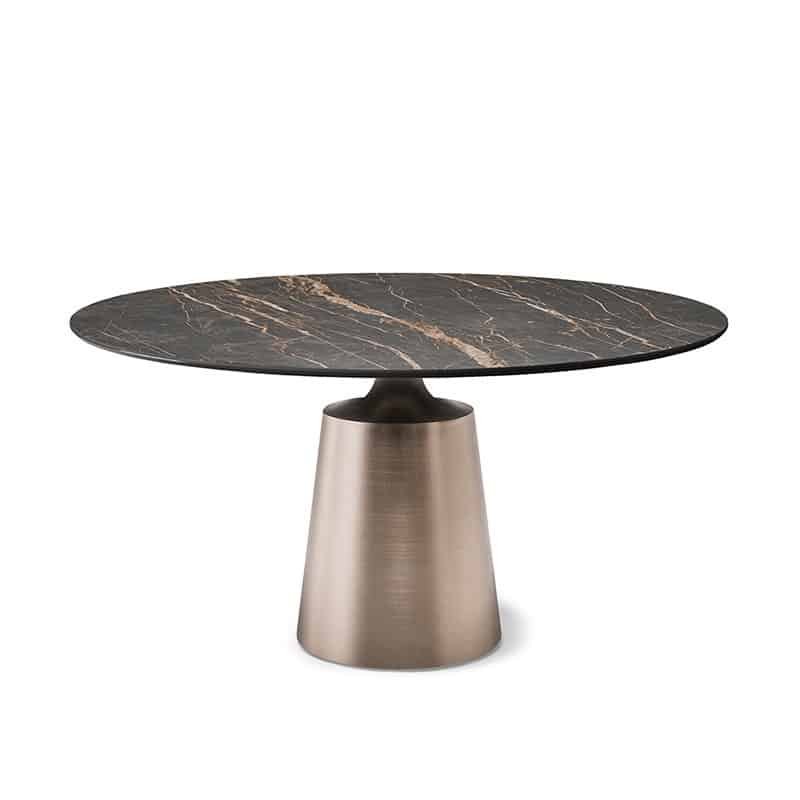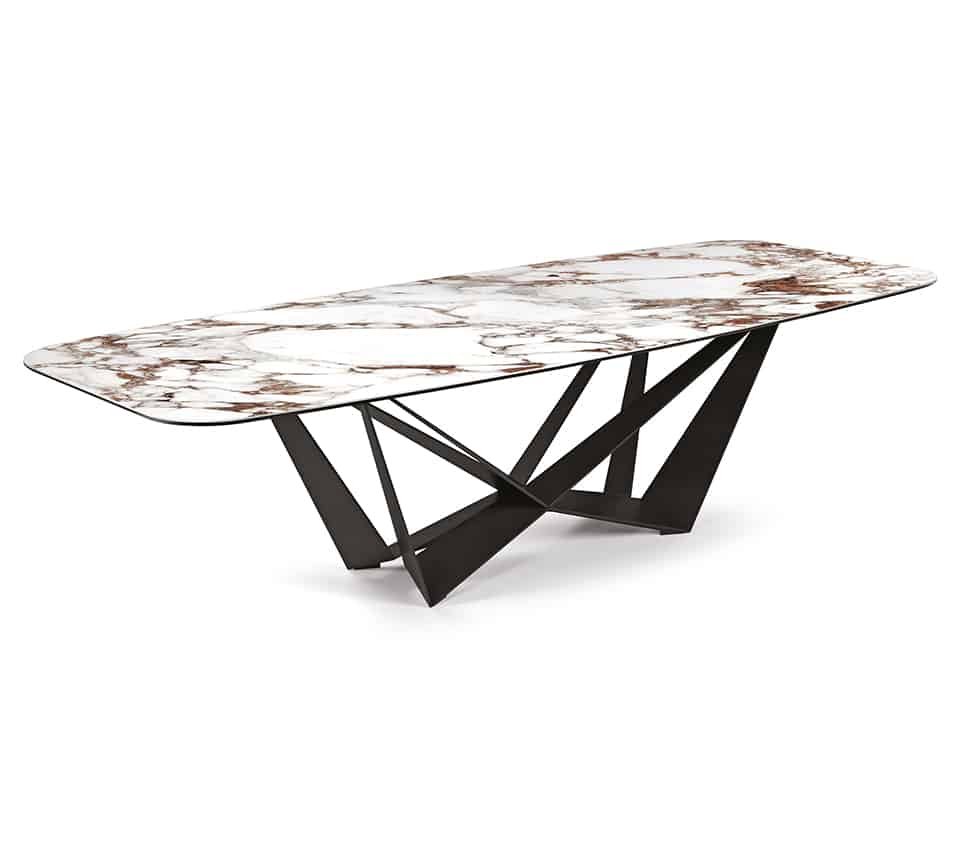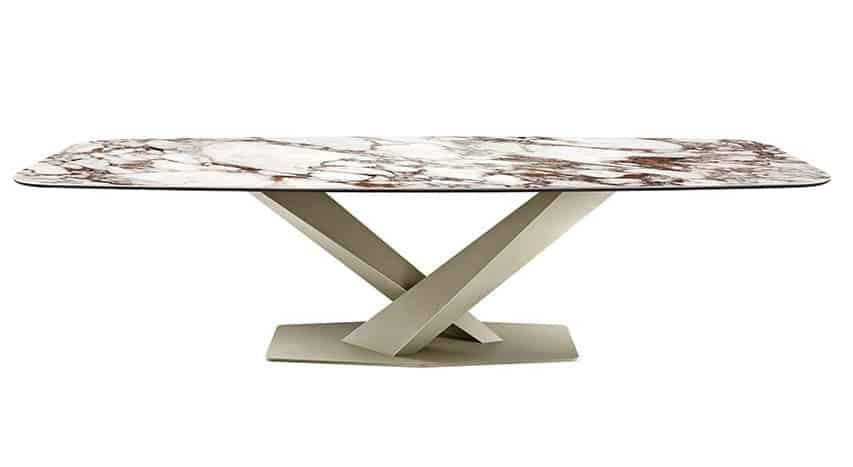Introduction
Marble tops are sumptuous and timeless, but their heavy weight demands a stable, long-lasting, and visually appealing foundation. The material of the table’s foundation is crucial to its stability, endurance, and aesthetic appeal. Choosing the right material is essential when building a dining, coffee, or console table. This guide explores the finest materials for table bases with marble tops, helping you make an informed selection.
1. Steel: Modern and Durable
Steel is one of the most popular choices for table bases due to its strength and sleek design. It pairs well with contemporary interiors and can support the significant weight of a marble top.
- Benefits:
- Exceptional strength and durability.
- Rust-resistant when powder-coated or finished.
- Available in various finishes, including brushed, polished, and matte.
- Best Uses: Dining tables, coffee tables, and office desks with a minimalist or industrial aesthetic.
- Design Tip: A black steel base complements white or light-coloured marble tops, creating a modern contrast.
2. Cast Iron: Timeless and Sturdy
Cast iron bases are ideal for traditional and industrial designs. Known for their strength and vintage appeal, they offer unparalleled stability for heavy marble tops.
- Benefits:
- Extremely durable and long-lasting.
- Classic, intricate designs for a vintage look.
- Resistant to wear and tear.
- Best Uses: Round or oval marble tops for dining or bistro tables.
- Design Tip: Pair a cast iron base with a polished marble top for a classic, timeless appearance.
3. Solid Wood: Warm and Timeless
Solid wood bases provide warmth and character to marble tables. Hardwoods like oak, walnut, and teak are both strong and attractive.
- Benefits:
- Natural and versatile, complementing various interior styles.
- Offers a softer, more organic look compared to metal bases.
- Can be carved or customized for intricate designs.
- Best Uses: Rustic or farmhouse-style dining, coffee, and console tables.
- Design Tip: A walnut base pairs beautifully with a dark veined marble top for a rustic yet sophisticated look.
4. Resin or Stone: Artistic and Unique
Resin or stone bases add a sculptural and artistic element to a spectacular item. These materials are great for developing unique, high-end designs that combine functionality and art.
- Benefits:
- Highly customizable for unique forms and finishes.
- Seamless and creative designs available.
- Marble creates a cohesive look.
- Best Uses: Luxury coffee tables or accent tables.
- Design Tip: A resin base with a high-gloss finish enhances the reflective qualities of a polished marble top.
5. Aluminum: Lightweight Yet Strong
Aluminum is a lighter alternative to steel and cast iron, offering strength without the extra bulk. It’s a good choice for more petite marble tops or portable designs.
- Benefits:
- Lightweight but strong enough for smaller marble surfaces.
- Corrosion-resistant, making it suitable for outdoor use.
- Available in various finishes and colors.
- Best Uses: Small dining tables, accent tables, and outdoor furniture.
- Design Tip: A brushed aluminum base complements modern marble tops with sleek lines.
6. Glass: Sleek and Minimalist
Though less common, glass bases can work for small or light marble tops, adding a contemporary and airy feel. Often, glass bases are combined with other materials like metal or wood for added stability.
- Benefits:
- Visually lightweight, making the marble top the focal point.
- Modern and minimalist aesthetic.
- Easy to clean and maintain.
- Best Uses: Small coffee tables or side tables in modern interiors.
- Design Tip: A frosted glass base adds texture and complements neutral marble tops.
7. Mixed Materials: Versatile and Dynamic
Combining wood, metal, stone, and steel can result in a visually appealing and adaptable base. Mixed material designs frequently balance beauty and functionality.
- Benefits:
- Combines the best attributes of various materials.
- Flexible design choices for different interiors.
- Creates a distinct and appealing appearance.
- Best Uses: Dining tables and accent tables with complex interior themes.
- Design Tip: A wooden base with metal reinforcements works well for modern and rustic marble tables.
Factors to Consider When Choosing a Material
1. Weight Support
The base material must support the weight of the marble top without wobbling or cracking. For large and heavy marble tops, opt for heavy-duty materials like steel, cast iron, or solid wood.
2. Aesthetic Compatibility
Select a material that blends nicely with your interior decor and enhances the marble top. For instance:
- Modern interiors: Steel or aluminum.
- Rustic interiors: Solid wood.
- Luxury settings: Resin or stone.
3. Durability and Maintenance
- Steel and aluminum are low-maintenance and long-lasting.
- Solid wood may require frequent polishing to preserve its shine.
- Cast iron and resin bases can resist wear and tear but may need occasional touch-ups.
4. Customization Options
If you’re looking for a unique design, consider materials like resin, wood, or mixed materials that allow for customization.
Conclusion
Choosing the right material for a table base with marble tops is crucial to both functionality and aesthetics. Whether you prefer the modern look of steel, the timeless charm of wood, or the creative flair of resin, selecting the right choice can enhance the beauty and lifespan of your marble table. Take time to assess your needs, interior design, and the specific characteristics of each material to create a table that’s as stunning as it is practical.

